Historical detective. Caliber 45 mm
And here there are not just a lot of irregularities and roughnesses.
To begin with, the bulk of researchers for some reason speak of an anti-tank gun with a caliber of 45 mm, completely ignoring the rest. Probably because Comrade Shirokorad did not write, and without him it is difficult to swing his arms, I agree.
But Shirokorad really wrote about the anti-tank gun, and he wrote well. Which, however, is no reason to forget all the other guns.
The rest is tank the gun, this is the battalion howitzer, this is the anti-aircraft gun, this is the semi-automatic station wagon, this is the sea gun. And all - 45 mm.
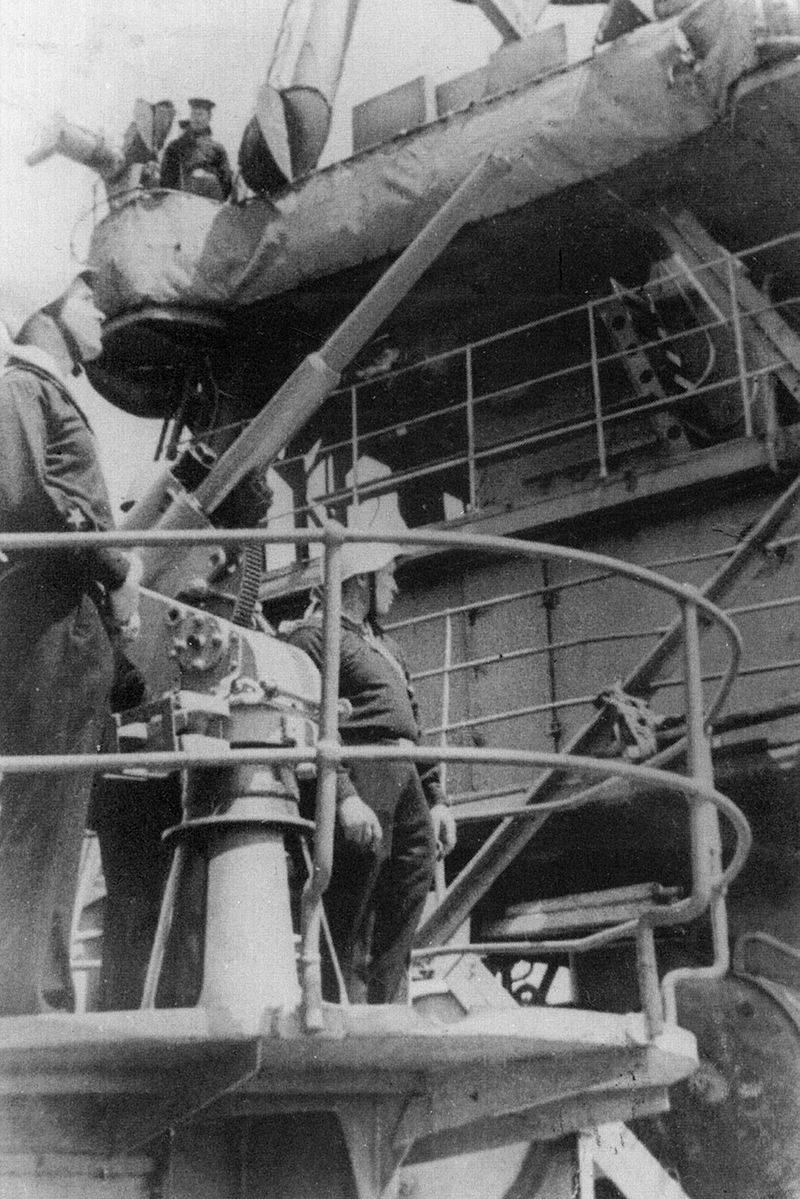
Say that the tank / anti-tank is the same thing. Well, yes, here are just ways to mount and move a little different, as well as the shells that were used. Tanks with tanks fought only with not-so-good generals. Good tanks were hollowed out by bunkers, bunkers and everything else, for which mostly high-explosive shells were needed.
However, we have written quite a lot about this, there is nothing special to invent.
As an intermediate result, we note that the 45 mm is not exclusively an anti-tank caliber of the Red Army. There were more than enough guns with such a caliber, and this, I must say, pretty much shakes the opinion of my respected Alexander Borisovich.
Why? Everything is simple.
If you look at a single "forty-five", then yes, it all fits together, and the version works. If you look at the caliber as a whole - no, no, and again no.
So, the version of Shirokorad and followers.
The famous “forty-foot” is the overlay on the carriage of the 37-mm anti-tank gun 1-K of the 1930 model of the year of its barrel, bored to 45 mm.
Logically, the reception is as old as the world, nothing new. If the base allowed, they sharpened everything. Not only ours.
About the 1-K gun, it’s also worth saying a few words, although we wrote about it. Yes, this is the same 3,7 anti-tank gun of the 1926 model of the year from Rheinmetall, bought by the Soviet Union through the shell company Butast. Purchased "with giblets", that is, with all possible technological documentation. For a million with a small (1,125 million, to be exact) dollars.
The 1-K cannons were fired only in half a thousand, but the military didn’t like the gun, it seemed frankly weak (the Great Patriotic War confirmed this), and the gun was quickly replaced with the 19-K.
Caliber 45-mm ... Although ...
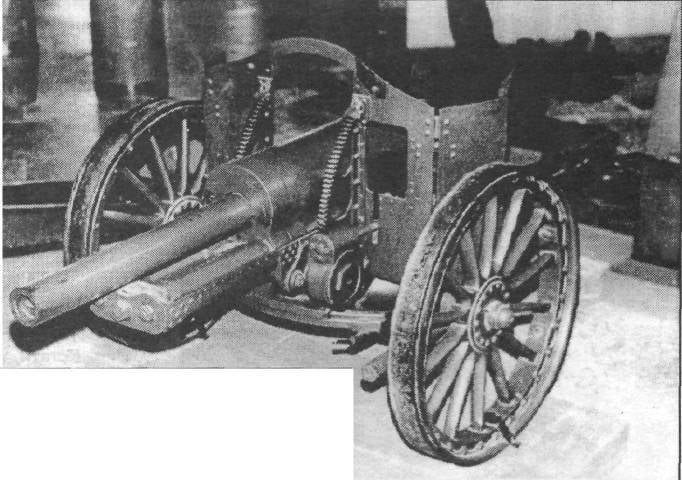
Currently, there are several versions of how this strange caliber formed in our troops. In the world there was a place to be a standard caliber 47 mm, why did it all turn out “not like everyone else”?
Version No.1
Version No. 1 says that allegedly it was impossible to mount the barrel from the same 37-mm gun on the carriage of the 47-mm gun, because it was cut to 45 mm.
I don’t even want to criticize and disassemble the version.
2 (TWO!) Millimeters. On the gun carriage. What kind of admission is this that could not fit? And, perhaps, the 47-mm gun had such a powerful shell that the gun carriage could not stand it? Well, more or less suitable, however, I will give a tablet from an article about anti-tank guns of the Second World War. And there you can see that the 45-mm gun is not particularly inferior in terms of power to the 47-mm sisters. And even surpasses some.
In any case, that dimensional, that strength weaknesses - well, it looks stupid.
The Hotchkiss gun gave an initial projectile speed of 701 m / s versus 760 m / s for the gun of the 1932 / 37 sample.
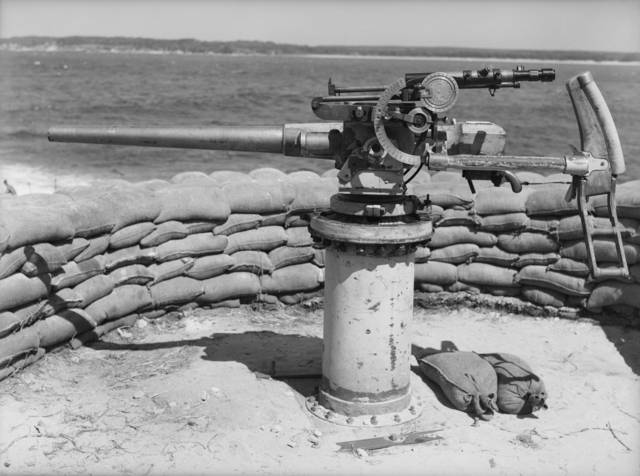
For an armor-piercing projectile, the difference is not very critical, but for a high-explosive fragmentation, so much is not even necessary. This is evidenced by such a quantity as the mass of the powder charge: at the Hotchkiss cannon 350 g, armor-piercing shells of "forty-five" until 360 g. A high-explosive fragmentation shell was thrown 100-115 g of gunpowder.
Version No.2
Version # 2 looks more serious, and Shirokorad and other (very numerous) supporters in the forums favor it. According to this version, supposedly after the revolution, a large number of armor-piercing ammunition accumulated in the military depots for the aforementioned 47-mm Hotchkiss naval gun.
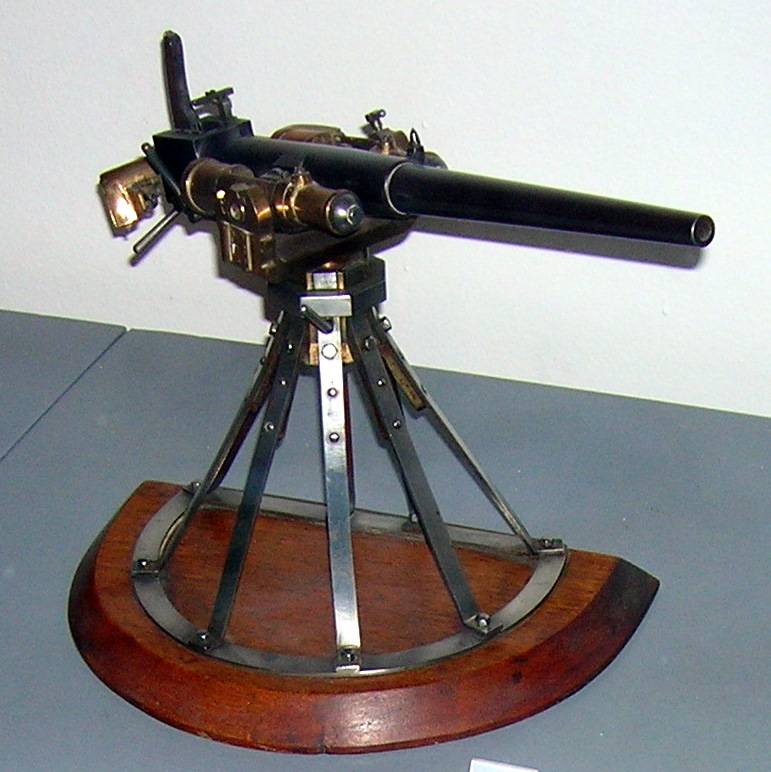
Well, there was such a gun. Yes, at that time it was completely out of date, and yes, the shells from it at sea were theoretically completely useless, so they decided to transfer them to land and use them as anti-tank / infantry support instruments. There were not very many tanks at that time.
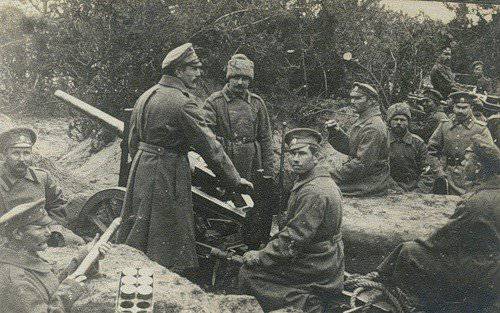
The whole problem is that the Hotchkiss anti-mine gun was originally imprisoned for the fight against unarmored targets such as destroyers, boats and submarines. And so bad luck, I did not find armor-piercing shells in the specification for it. Iron and steel grenades were. So there is no clear docking.
The idea of remaking itself also looks strange.
Well, we decided to clean up the warehouses, transfer the land artillery shells, let them suffer. It's that simple ...
Grind belts by 2 mm. Is it easy or what? This, I think, or how.
Need to defuse the shell. That is, remove it from the sleeve. Then remove the fuse. So, just in case. And then you can tighten the shell into the cartridge and grind the belt. Without a real prospect of falling under the explosion of this shell.
Then again insert the shell into the sleeve, restore the tightness again, and yes, you can shoot.
I immediately have a question: wasn’t it easier to make an 47-mm gun at once and not to engage in perversions?
Now experts will begin to say that the grenade flew at the Hotchkiss cannon at a speed of 700 m / s, at 19-K the speed was already 760 m / s, and at M1932 - 820 m / s. And unfortunate belts could tear.
I agree that the initial velocity of the shells has increased. And they could completely tear off their belts. However, there is a nuance that spoils everything. Namely, the complete lack of data.
“A lot of shells in warehouses” - how many in pieces? Quantity is not called by anyone. Yes, and in principle, it is unrealistic to call it, because the Russian-Japanese, World War I, Civil Wars plus the centuries-old Russian mess.
The fact that 47-mm was about nothing became clear back to Russian-Japanese. No wonder the guns of Hotchkiss were removed from the ships by hundreds, installed at least on some semblance of machine tools and sent to the front line in order to somehow compensate for the shortage of battalion and regimental guns.
And since for the infantry in those years, the armor-piercing projectile was a completely useless thing, it is not surprising that these shells were simply lying around in warehouses. It is logical, it is indisputable, it is normal.
Another question is how many in grams ... There is a complete secret with this, but I think that they were pretty much there. If the tsar’s reserves for half of the Great Patriotic War (76,2 mm) were enough, then the 47-mm “good” could be in excess.
And here there is a dual feeling.
Well, if mountains of shells lie directly, take and shoot - I return to the question of whether it was easier to make a barrel for shells. Simply, at Obukhovsky and not such calibers were deployed.
Plus (very substantial) it would be possible “in case of what” to intercept the shells from the Allies. During the First World War, both the British and Americans supplied us with 76,2-mm shells, not only in full, but supplied.
But if there aren’t so many shells, then it’s quite possible to decide on such an adventure as regrinding a shell.
And what do they lie? Well, let it be useful, such shells can easily be used as combat training, why not? The wagon benefits, huge savings, training costs are reduced, let the artillerymen beat this ancient for training purposes ...
But again, it is very, very doubtful that millions. I found the figure that on the 1 of January 1901 of the year in the Maritime Department there were 963 47-mm guns of Hotchkiss. From this we conclude how many shells could be in the warehouses for a thousand guns.
And since we are talking about the fact that there were frankly few guns, therefore, there were hardly millions of shells for them. A couple of hundred thousand in strength.
We are talking about the gestures of the 30 of the last century, when the First World War, the Civil one, and the intervention already died out. And gobbled up their shells.
So it turns out that the mosaic does not quite add up.
Version No.3
Version No. 3 states that the caliber 45 mm is actually the caliber 47 mm, but:
1. It was developed according to a cunning plan, so that the enemy could not use our shells in case of emergency.
2. 45 mm is exactly the same 47 mm, but it was simply measured in different ways. Ours was measured by the distance between the opposite rifling fields, and abroad we measured from the bottom of the rifling groove to the bottom of the opposite groove.
Both cases are so-so. Finnish, World War II, and World War II showed that one can and should not give a damn about such an approach with calibers, as practice has shown that ammunition can usually be very easily provided with trophy guns and vice versa.
As for such aspects of the measurement ... There is still no way to get such a difference, which is why we needed a lathe in order to remove the copper bands and turn the projectile into 45-mm.
Own version
I don’t think I’ll open any such secret, but it seems to me that our idea of the 45 mm caliber was simply borrowed from us. How much at that difficult time for the country. Especially regarding artillery.
Buy - it does not matter if they sold. More often not sold. But the fact that intelligence worked for the Soviet Union, God forbid others, is a fact.
It turned out during the selection of material for this article that the development in Russia on the calibers 40-47 mm was carried out before the revolution. There was a very interesting Lichonin project, unified with the Hotchkiss cannon, and Lender worked in this direction.
Then, of course, it was not up to the development.
Meanwhile, in the West, too, did not sit idly by. Especially the French, not tied hands, unlike the Germans. And the French in the work of Saint-Chamonix and Nordenfeld used calibers from 42 to 45 millimeters.
Honestly, I don’t know how this caliber was calculated, but somehow the designers came to the conclusion that the caliber 40-45 mm would be optimal for a battalion gun (the so-called trench guns).
The guns of Nordenfeld and Saint-Chamonix were not adopted. And this is possible and lies in such a nuance, since we also began to creep in the direction of creating tools for the future.
Research work was carried out by Lender in the 1916 year, there were achievements. The new gun was supposed to replace the 37-mm trench guns and adapted Hotchkiss sea guns.
Franz Franzievich Lender proposed the 42 mm caliber as a working variant, but apparently they decided to make the gun more powerful, therefore they approved the 45 mm.
Apparently, not just like that. It is possible that there was an opportunity to get acquainted with the work of Nordenfeld and Saint-Chamonix. I admit, because it was in those years that our intelligence plowed like a damn.
As a result, in the 1929 year (yeah, we started in the 1916-m, continued practically to zero in the 1922-m and here you are) the battalion howitzer 45 mm of the 1929 model of the year came into service.
And in addition to the howitzer, a certain “BM gun,” that is, high power, was also discussed. BM did not go into the series, but after a while, work on it was used when remaking the 1-K.
But I will argue about the alteration of the projectile. According to the order, Lender developed the 45 mm HE shell in the 1916 year. So, the 47-mm shell from Hotchkiss had absolutely nothing to do with it. The 45 mm projectile was, and the guns were designed with support on it.
And this is very logical.
Who consumes HE shells? Anti-aircraft guns? Yes. Tanks? Yes. Infantry support guns? Yes. Howitzers? Yes!
The exceptions are indeed anti-tank and sea guns. Well, tank to a lesser extent.
This means that the industry long before all this noise around Hotchkiss shells was sharpened for the release of 45 mm shells.
And this is a fact from which it is difficult to get away. The wedge did not converge on armor-piercing shells, because the nomenclature implied that they would not only shoot at tanks.
The range of shots of the 45-mm guns was as follows:
Armor-piercing: 53-B-240
Armor-piercing tracer: 53-BR-240
Armor-piercing tracer: 53-BR-240SP (solid)
Armor-piercing tracer subcaliber: 53-BR-240P
Shrapnel: 53-O-240 (steel)
Fragmented: 53-О-240А (steel cast iron)
Card-case: 53-Щ-240
Smoke: 53-D-240
Plus a line of shots for anti-aircraft guns:
Shrapnel tracer: O-333, OR-73, OR-73
High explosive: O-240
What is the conclusion? And the conclusion is very simple: the caliber 45 mm was due to anything but the desire to use allegedly huge stocks of armor-piercing shells 47 mm. Because in addition to armor-piercing shells, it was necessary to release all of the above-mentioned nomenclature of shells.
And released. And in huge quantities, because the 45-mm unitary cartridge was used everywhere: gunners, tankers, anti-aircraft gunners, sailors. Do not write off the entire submarine fleet of the Red Army, armed with 45-mm universal guns. And also battleships, cruisers, leaders, destroyers, minesweepers, hunters and so on.
Compared to the huge amount of shells that were to be released for ALL 45 mm guns, a drop of 47-mm shells from Gochkiss guns was exactly what it was.
Moreover, sharpened belts, which were supposed to cut into rifling, thereby improving compression and spinning the projectile around its axis, are unlikely to have a positive effect on ballistics. Rather, on the contrary, they worsened, and so much so that it was difficult to demand something really combat from these shells.
I am sure that the only application that they found was just training shooting. For the most part, this crippled shell was hardly suitable.
Therefore, I consider it possible to voice this conclusion:
1. The caliber 45 mm was a pre-revolutionary development of Russian engineers.
2. They returned to the project when the opportunity arose. Probably not without the help of intelligence and foreign developments.
3. The regrinding of 47-mm shells to the caliber 45 mm is nothing more than a successful attempt to attach shells that were actually useless at that time. The most useful disposal.
This is the opinion.
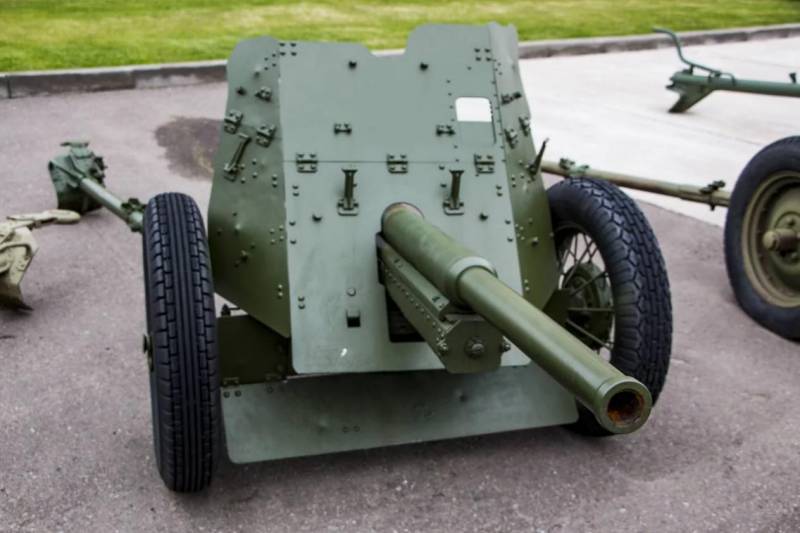
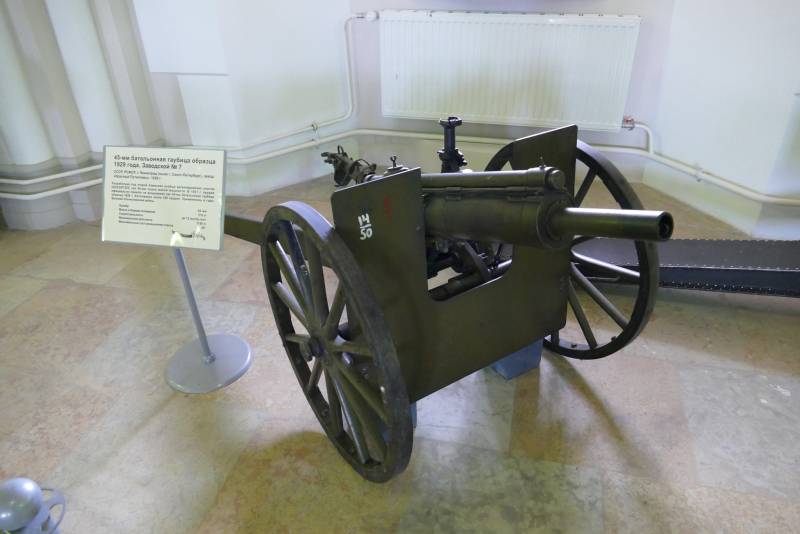
Information